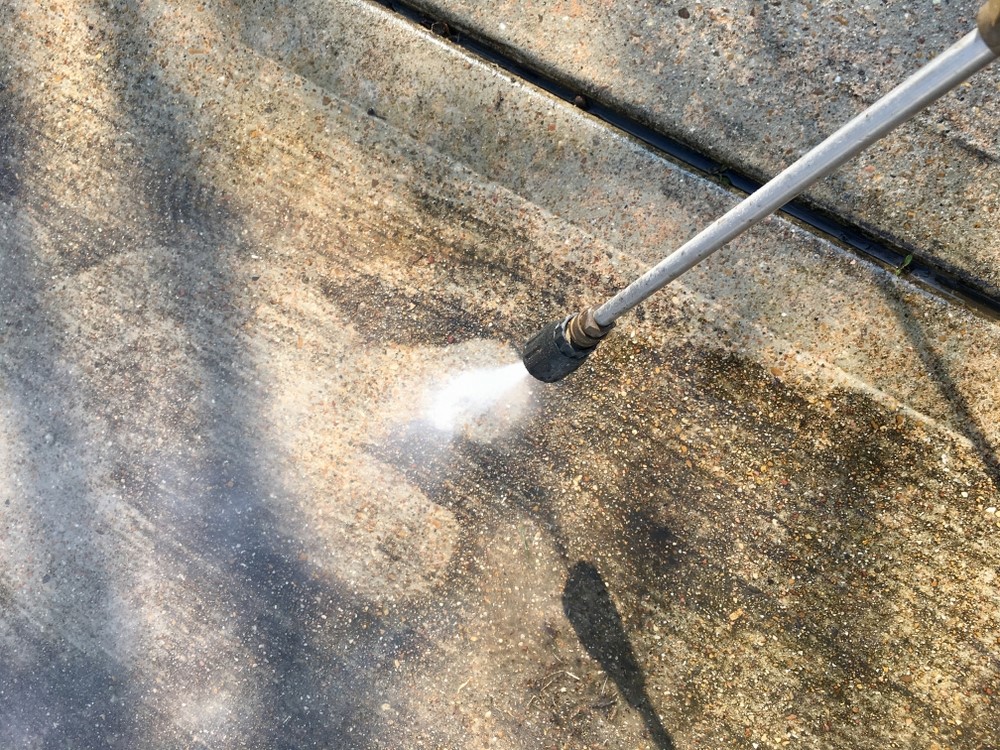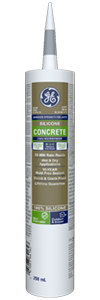Note: This DIY article is provided as a general guide only and is not intended to take the place of product-specific installation procedures; always follow applicable manufacturers’ instructions. Depending on your home’s age and condition, location within the home, and other potential factors, repairs and/or upgrades or other services may be necessary prior to the beginning and/or completion of your project that may involve the services of a home improvement professional. This article does not include advice pertaining to local building codes and/or any related inspections.
Canadian weather loves to throw the unexpected your way. You can experience sweltering summers or freezing winters. While preparing your home for weather and life, show your concrete some attention. Your concrete often holds together crucial parts of your home or is a central walkway. Adding sealant for concrete gives the area extra protection against the elements while increasing its durability and lifespan.
Learn the many benefits of concrete sealant and tips for adequately applying it around your home.
What makes concrete sealant unique?
Concrete sealant is specifically designed to improve the longevity of concrete. It fills gaps in the concrete to prevent moisture damage from rain and the elements. The best sealant is silicone, which can move, expand, and contract with the concrete.
Not all silicone sealant works with concrete. Look for silicone sealant formulated to bond with concrete to ensure it cures appropriately, such as GE’s concrete silicone sealant. This sealant offers several benefits to your concrete, including:
- Weatherproofing: Protecting your concrete from the elements, extending its life
- Mould protection: Offering 10-year mould-free protection
- UV protection: It won’t crack or break down in the sunlight
30-minute rain-ready: Can handle the elements within 30 minutes from the application
Concrete sealant fills gaps in the concrete to prevent moisture damage from rain and the elements.
Where can you use a concrete sealant?
Concrete sealant works for most concrete surfaces, such as sidewalks, driveways, and porches. You can use it for minor repairs and sealing if you have cinder blocks or chimney issues.
Concrete sealant also works on several non-concrete surfaces around your home, such as:
- Brick
- Stone
- Stucco
- Masonry
- Asphalt
- Metal
- Wood
- Aluminum
- And more
Before sealing an area, test the concrete sealant on a small space to ensure it appropriately cures. If the area has a galvanized surface or special coatings, it may not properly cure.
Where should you avoid using concrete sealant?
While sealant for concrete has flexible uses, it also has several limitations. Because it’s made from silicone, avoid using it in any area where you will paint over it. Painting over silicone sealant will lead to cracking unless you use a sealant explicitly designed for paint.
Concrete sealant has chemicals that make it unsafe for surfaces in contact with food. It is also not built for continuous water exposure, so avoid using it underwater or in aquariums.
5 tips for applying concrete sealant
Follow these five tips for applying a concrete sealant to experience its full benefits.
-
Thoroughly prepare the area
Before jumping into your sealing job, properly prepare the area. You will want to clean where you plan to apply sealant. This removes debris, mould, and bacteria. If you already have sealant on the concrete, remove the old sealant during this process.
Once the area is clean, allow it to dry before beginning the application process. Trapped moisture can prevent the sealant from fully adhering to the surface.
For the best results, only apply the sealant if it’s above freezing (0 degrees Celsius). If the weather is too cold, the sealant will take longer to cure. GE recommends keeping the sealant and area at 21 degrees Celsius.

-
Use a caulking gun for accurate application
Concrete sealant comes in cartridges that work in a caulking gun. Before loading it, cut the nozzle to your desired size at a 45-degree angle, measuring it based on the smallest crack. You can adjust your bead size further by adding more pressure to your caulking gun.
After cutting the nozzle, use the caulking gun to pierce the inner foil of your concrete sealant cartridge.
Because the sealant begins to dry within minutes, avoid cutting the sealant until you’re ready to seal your concrete.
-
Store unused concrete sealant
You may not use a full sealant cartridge in one job. After you finish, properly storing your concrete sealant allows you to use it again. The shelf life of GE’s concrete sealants is 18 months after storing it unopened.
The shelf life begins to decrease once you expose the sealant to air. The more air in the tube, the shorter its shelf life.
To eliminate the most air and extend its shelf life, squeeze the remaining concrete sealant toward the nozzle opening, pushing the air out of the tube. Seal the tube with a nail or cap. Plastic wrap can also create a secure seal in a pinch.
Once you reseal the tube, store it upside down to prevent new air from coming into the tube. Use the remaining concrete sealant as soon as possible to prevent it from drying out.
-
Maintain your sealant
If you properly apply the concrete sealant, it will help protect your concrete. However, you are responsible for preserving the sealant to extend its life and increase your concrete’s protection.
There are many situations in which a high-quality concrete sealant can withstand wear and tear. For example, GE’s sealant protects against:
- Water damage
- UV exposure
- Mould
To keep it strong, avoid using strong chemicals, primarily paint thinners and isopropyl alcohol, as these chemicals can dissolve silicone sealant. Regularly wash the area using a pressure washer or other means to prevent mould build-up on top and around the sealant that might shorten its lifespan.
-
Remove concrete sealant with care
Concrete sealants have varying lifespans. With proper care, GE’s concrete sealant will last nearly ten years on average. When it’s time to replace the sealant, you will want to first remove all the old concrete sealant.
Start by scraping off as much sealant as possible using a steel brush or knife. Move slowly as you want to avoid scratching up the surface around the sealant.
While you shouldn’t expose the sealant to chemicals during cleaning, now is the time to break out those chemicals that will help remove the sealant. First, test the chemical in a small discreet area to watch how it reacts to the surrounding areas. If there are any coatings on the concrete, stick with scraping the sealant out and avoid chemicals.
Once you thoroughly remove the old sealant, you are ready to add fresh sealant that will breathe new life into your home.
Protect your home this year against Canadian weather, wear and tear, and mould growth by using sealant for concrete to increase its durability. Find a store near you that carries GE concrete sealant.


